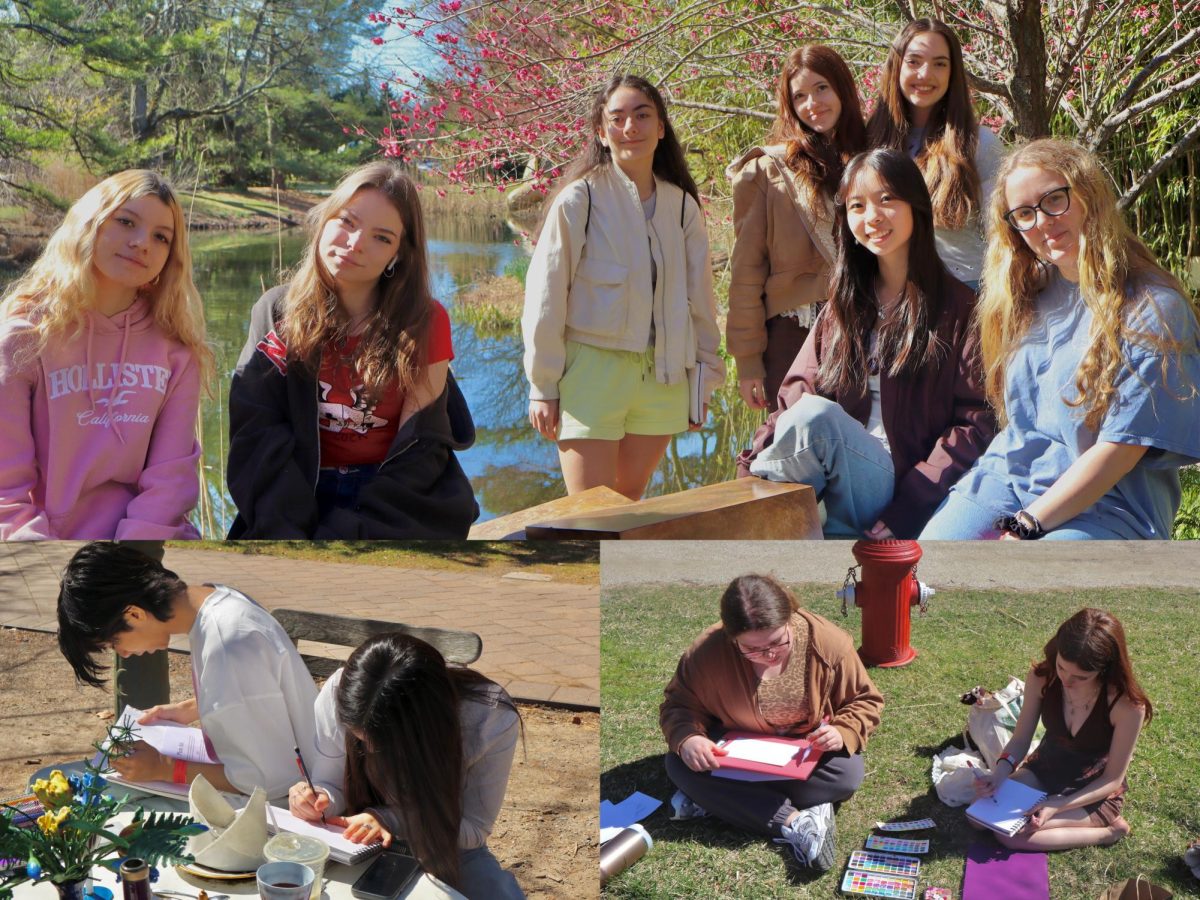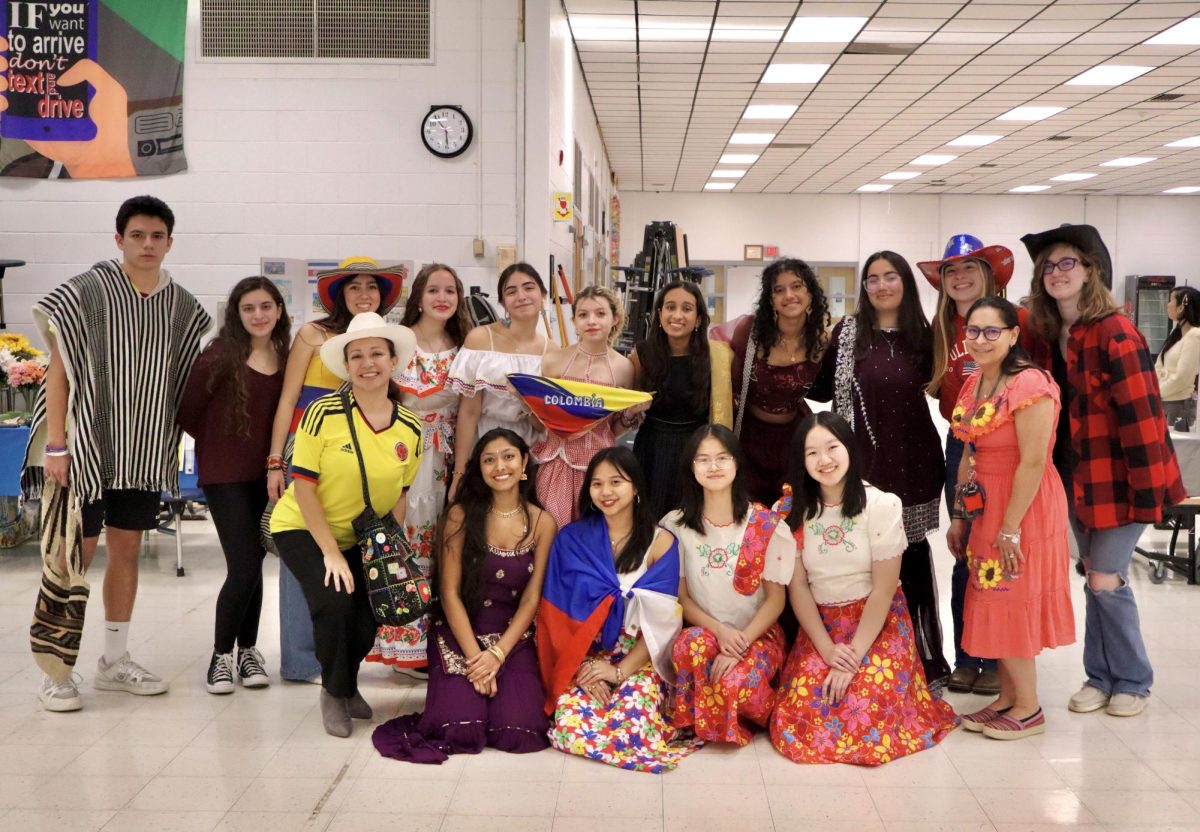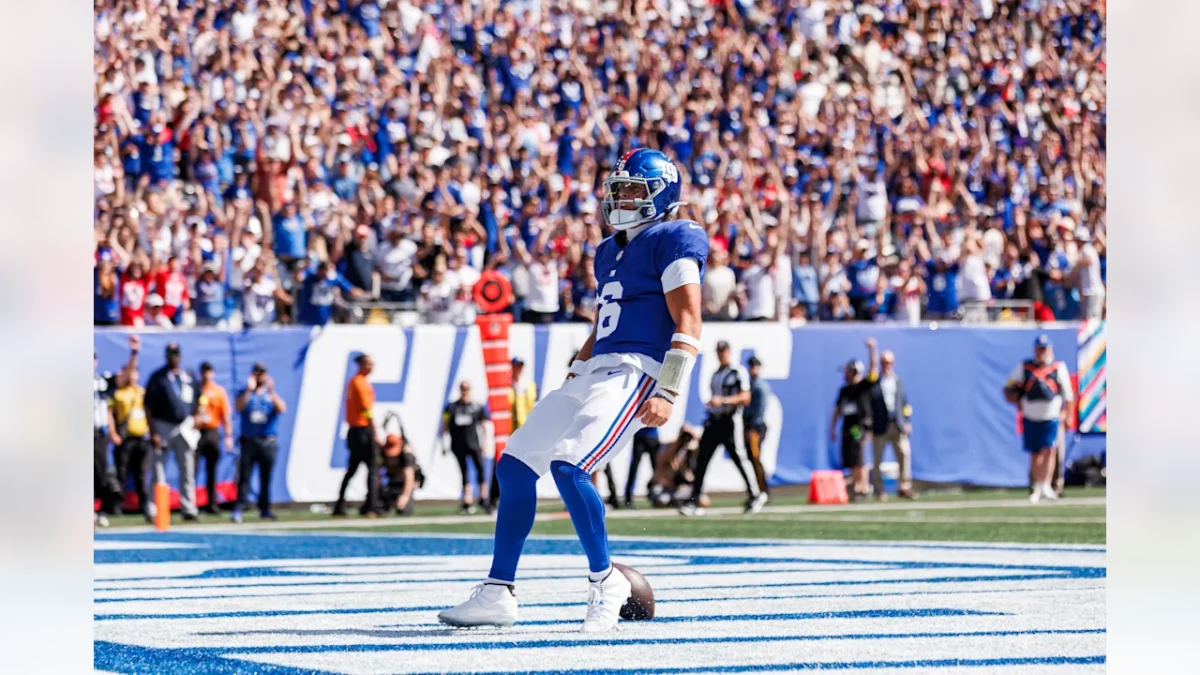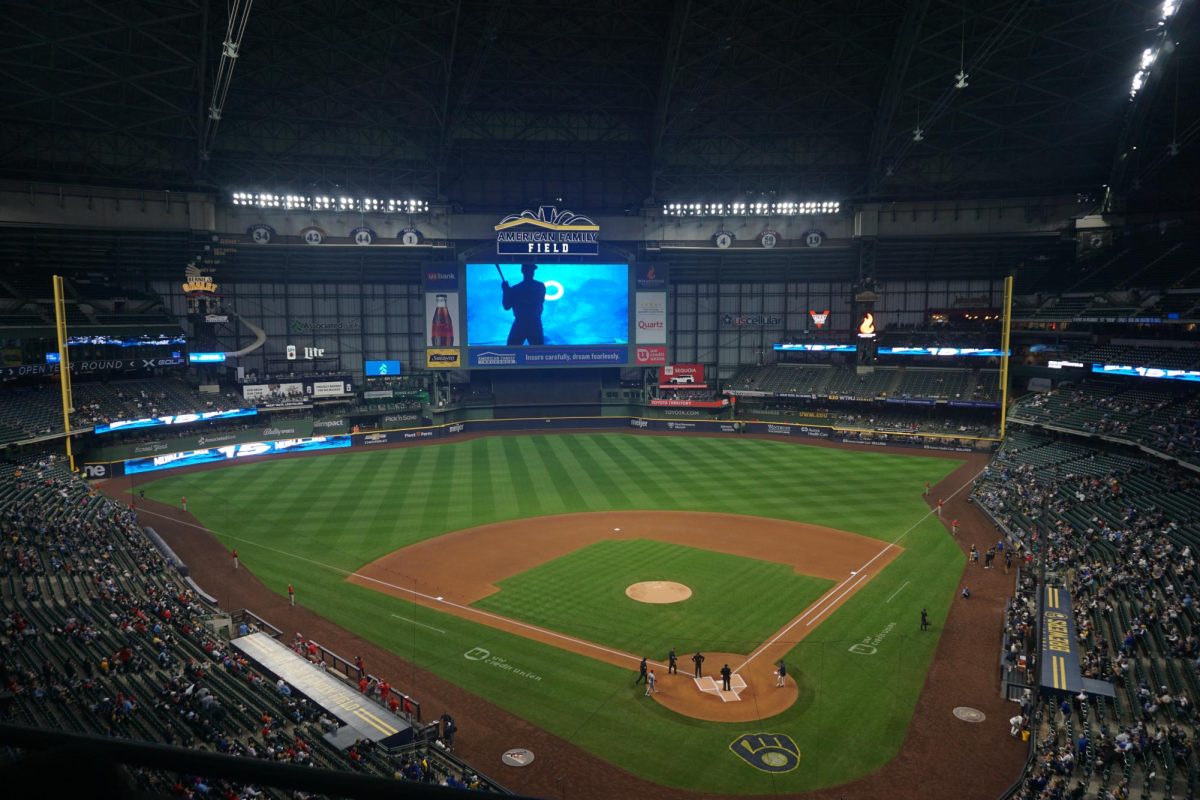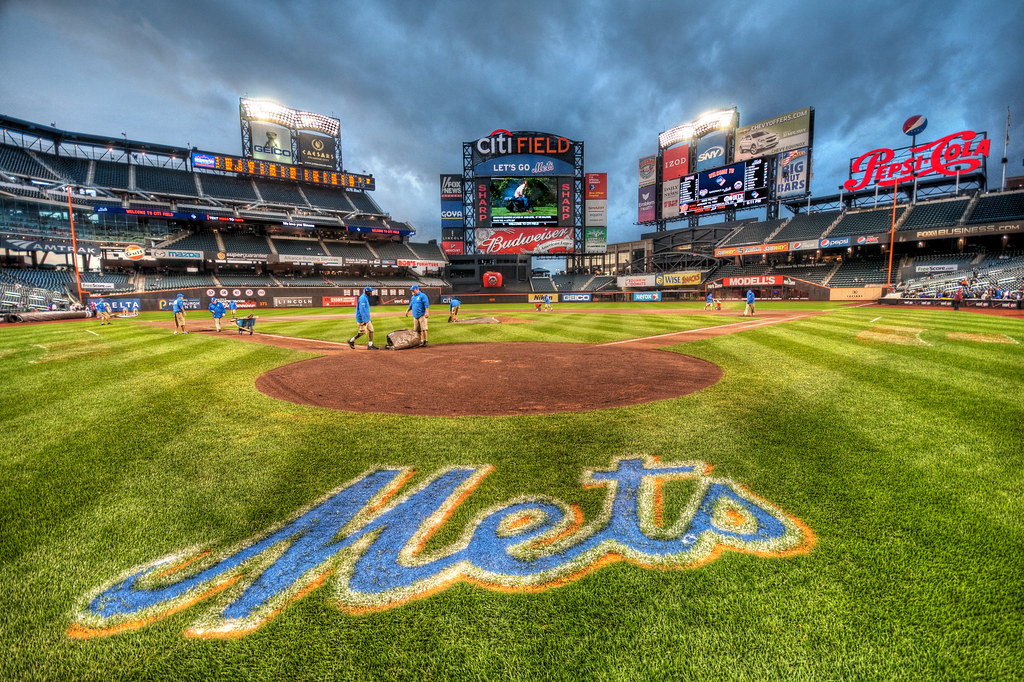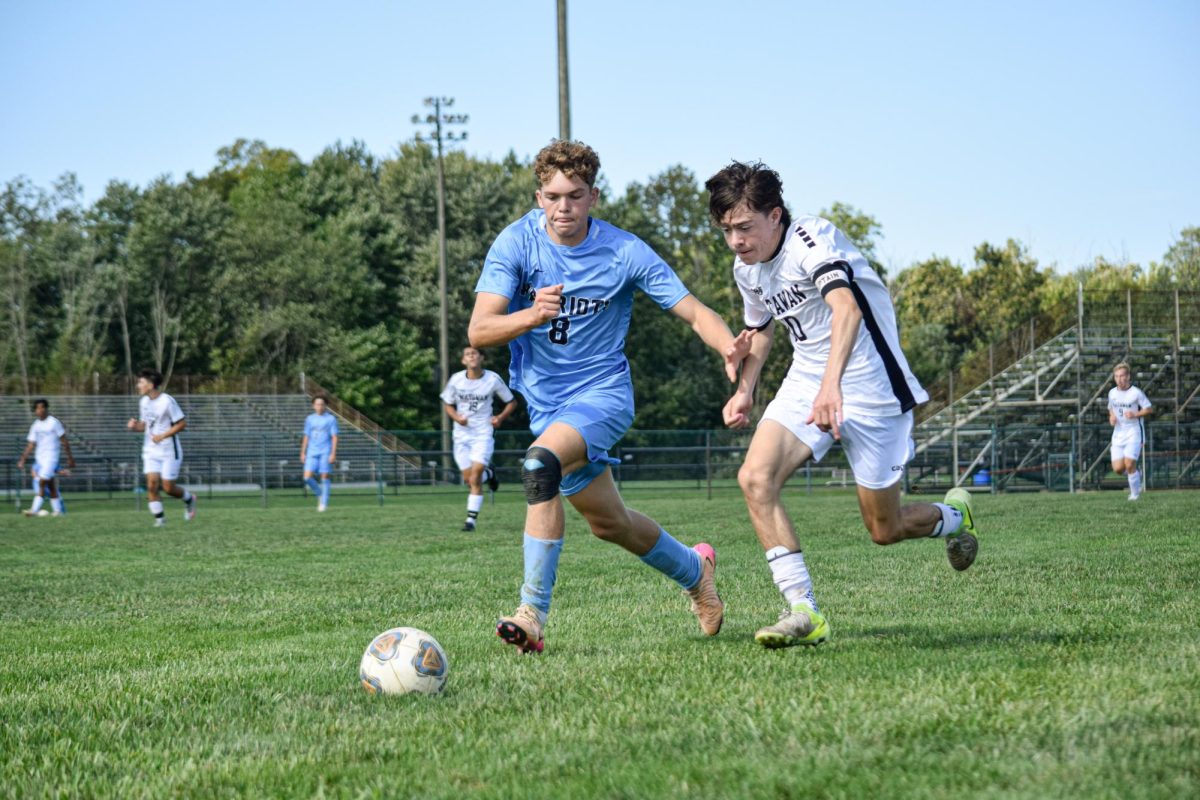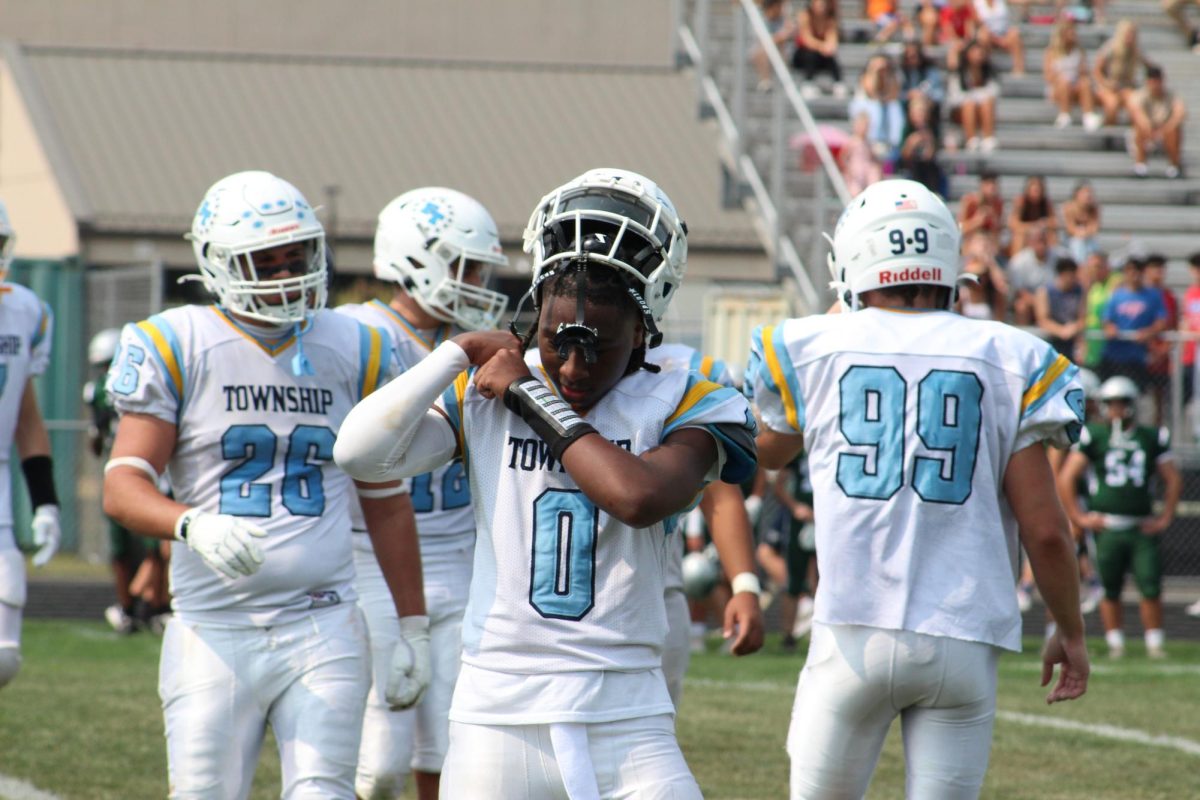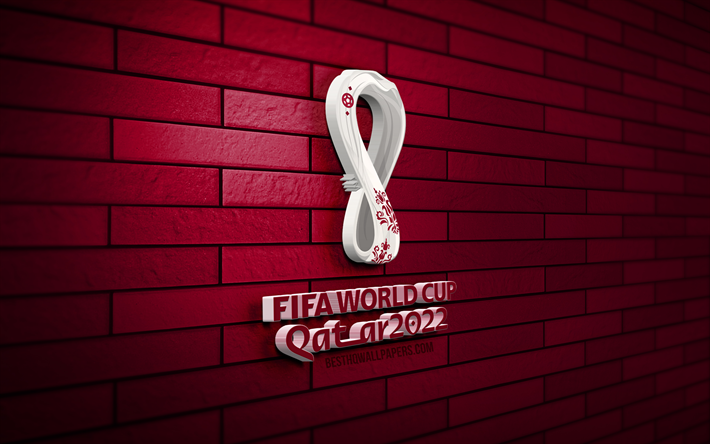World Cup Guide: Groups E-H
December 2, 2022
Guide to the Mid-Season World Cup (Which Aged Very Well)
It is hard to ignore the magnitude of major sporting events involving many countries around the world, especially if one of these countries is a resurgent American team. That is what will be on display though, during the 2022 FIFA World Cup, which is being hosted in Qatar. The tournament is going to be much different than usual World Cups, seeing as it will be held in the winter time, interrupting league schedules across Europe. Today, we will look at the World Cup as a whole, including the teams and their players.
Controversy
It is hard not to address the controversy behind the selection of Qatar as host, or the preparation for the tournament. There are whole other articles dedicated to the alleged behind-the-scenes bribery and corruption at FIFA, so I will just mention them briefly. Qatar was selected as host in 2014, and immediately, fans became outraged. Investigations into FIFA opened, and arrests were made by 2015. Qatar had very little infrastructure to host such a large-scale sporting event in 2014, so they had to hire migrant workers to help build the stadiums. The country was criticized for providing poor working conditions, with human rights groups citing the number of workers dying during the preparation for the World Cup. The Qatari government implemented some labor reform, but it had little impact on the working conditions. FIFA president Gianni Infantino has attempted to turn the focus from the human rights toll to soccer, but these controversies will ultimately cast a dark shadow over this tournament.
The Groups
The group stage of this World Cup will feature eight groups of four teams. The top two in each group will advance to the knockout stages (the Round of 16), and those two teams will have accumulated the most points. A team will earn three points for a win, one for a draw, and zero for a loss. Tiebreakers, if needed, included goal differential, goals scored, and fair play (getting fewer yellow or red cards, which knocked Senegal out of the previous World Cup). The groups look like this:
| Group A | Group B | Group C | Group D | Group E | Group F | Group G | Group H |
| Qatar | England | Argentina | France | Spain | Belgium | Brazil | Portugal |
| Ecuador | Iran | Saudi Arabia | Australia | Germany | Canada | Serbia | Ghana |
| Netherlands | USA | Mexico | Denmark | Costa Rica | Morocco | Cameroon | Uruguay |
| Senegal | Wales | Poland | Tunisia | Japan | Croatia | Switzerland | South Korea |
The top two of each group advance to the round of 16, where the first place of one group will go against the second-place team in another group. For example, first place in Group A will face second place in Group B, and vice versa. The same applies to Groups C-D, E-F, and G-H. This means no two teams in the same group will meet unless they get to the final or the third-place game, the latter of which will be contested between the two semi-final losers.
The teams
Now, here’s a quick guide to the teams themselves, for groups E-H. Every team has one significant thing going for them this tournament, whether it be about the team itself or one of their star players.
Group E
Costa Rica
There is not too much to say about Costa Rica. The majority of the squad features players based in their home country, whilst most others are based in MLS. This will be the last World Cup for goalkeeper Keylor Navas and national team captain and midfielder Bryan Ruiz. The same likely goes for defender Oscar Duarte. However, there are some flashes of their future overseas. Third goalkeeper Brandon Sequeira is 23 and might be the starter in 2026, should the Costa Ricans qualify. Jewison Bennette is expected to slot in for Ruiz in midfield. Navas and Ruiz hope to have a good last World Cup, but it is unlikely considering the group they have facing them.
Japan
Japan was the first nation to submit its official squad for the World Cup. The squad is much improved on the last World Cup, in which the Samurai Blue blew a 2-0 lead to lose in the Round of 16 to eventual semi-finalists Belgium. This is going to be the last World Cup for long-time starting goalie Eiji Kawashima and for team leaders Maya Yoshida and Yuto Nagatomo. However, the Japanese squad shows that the future is bright. Only seven of the 26 players in Japan’s squad play in their home nation. The rest play abroad. Takehiro Tomiyasu, Hiroki Ito, and Ko Itakura will anchor the defense in the coming years. Wataru Endo and Hidesoma Morito are a solid midfield duo. But, it is in attack where buzz about the future is most merited. Daichi Kamada, Takefusa Kubo, Takumi Minamino, Daizen Maeda, and Kaoru Mitoma all have opportunities to show their worth on the world stage. The Samurai Blue, under the stewardship of Hajime Moriyasu, should show some flashes of good quality. With that said, however, the two European teams in their group are going to be hard to beat.
Germany
Germany is out seeking redemption after a dismal 2018 World Cup saw them exit in the groups. They scored just twice in three games and conceded twice against South Korea to seal their fate in the final group game. This World Cup may be their last with Manuel Neuer, but Germans need not worry – Marc-Andre ter Stegen and Kevin Trapp are solid alternatives. In defense, coach Hansi Flick can rely on Antonio Rudiger, Nico Schlotterbeck, and Niklas Sule being flanked by speedy creators Ridle Baku and David Raum. Joshua Kimmich will be very solid in midfield (or right-back) alongside Leon Goretzka, whilst captain Thomas Muller, who may be in his last World Cup also, has the attacking support of Leroy Sane, Kai Havertz, teenagers Jamal Musiala and Youssoufa Moukoko, and Serge Gnabry. Also, watch out for the on-fire Niklas Fullkrug. In sum, there is a ton of speed and athleticism in this German side that could easily finish top of Group E, but could also easily finish second in the group.
Spain
Compared to their triumphant 2010 World Cup, Spain has disappointed in the last two editions of the tournament. They crashed out in the group stages in 2014 and were eliminated by Russia in 2018’s Round of 16. Many changes have been made to Spain’s squad. David De Gea, who is error-prone when it comes to passing the ball and being aggressive, has been dethroned in favor of Unai Simon and David Raya. Aymeric Laporte and Pau Torres could show their worth as the future of Spain’s defense in the wake of Sergio Ramos’ exclusion and Gerard Pique’s retirement. Jordi Alba is getting old, but Jose Gaya looks like a viable replacement. 34-year-old Sergio Busquets will be succeeded by Rodrigo Hernandez. Marcos Llorente and Pedri add extra creativity to the midfield in place of David Silva and Andres Iniesta. Alvaro Morata is in solid form, but will have to be relied on as the only out-and-out center forward on the team. Ansu Fati and Yeremy Pino could make an impact, though. Coach Luis Enrique needs to make a statement in this tournament if he is to keep his job, and he has all the pieces he needs to do so.
I believe that Germany and Spain should be getting out of the group with ease (Germany finishing top). But, expect Japan and Costa Rica to cause chaos and frustration for them.
Group F
Canada
This is Canada’s most talented team ever, unquestionably. The Maple Leafs have many athletic and fast players, most notably Alphonso Davies, who has become one of the most prized assets of Bayern Munich, being their starting left-back. Starting goalkeeper Maxime Crepeau may have gone down with a severe injury, but Milan Borjan is more than a viable option in goal, with the 35-year-old playing for European competition regulars Red Star Belgrade of Serbia. Midfielder Stephen Eustaquio is a solid starter for FC Porto, whilst striker Jonathan David is currently one of the top goal-scorers in France’s Ligue 1. Also starting in Ligue 1 is Ike Ugbo, an English-born Canadian. Club Brugge duo Tajon Buchanan and Cyle Larin could also add more flair to this young team. John Herdman is looking to put his players, and himself, on the map, and his team is going to need some luck in this Group F.
Morocco
Morocco played some close games in the 2018 World Cup, losing both of their first two games by a score of 1-0, but they managed to hold Spain to a nearly costly draw. They had some solid players then, and they do now as well. Yassine Bounou has excelled in goal for Spanish club Sevilla. In defense, Achraf Hakimi has become one of the world’s best right-backs, whilst Noussair Mazroaui offers valuable versatility. Ilias Chair Abdelhamid Sabiri, Sofyan Amrabat, and Azzedine Ounahi offer coach Walid Regragui a glimpse of a bright future ahead for the Atlas Lions’ midfield, as do forwards Abde Ezzalouli, Munir El Haddadi, and Zakaria Abouklal, the latter two of which were born in Europe to Moroccan descendants. Hakim Ziyech does a lot of the creative work in attack, meanwhile, feeding other dynamic players like Sofiane Boufal and Youssef En-Nesyri. Morocco, like Canada, will need luck, but they have a decent talent pool for a nation their size.
Belgium
This is the last chance for Belgium to capitalize on its golden generation. Coach Roberto Martinez led a batch of players, including Premier League stars in their prime such as Romelu Lukaku and Eden Hazard, to a third-place finish in 2018. Four years later, Lukaku and Hazard are not the same. Meanwhile, chief playmaker Kevin De Bruyne may be in his last World Cup, as he will be 35 in 2026. And defensive linchpins Toby Alderweireld and Jan Vertonghen are getting old as well. However, there is hope for the future. Amadou Onana has excelled for the English club Everton. Yannick Carrasco has evolved into one of the best left-wing backs in the world. Lois Openda has scored 7 goals in 14 Ligue 1 games for RC Lens. Charles De Ketelaere is a blossoming star in Serie A. Leandro Trossard and is evolving into a top playmaker alongside Brighton and Hove Albion. And Timothy Castagne provides solid depth at right-wing back alongside Thomas Meunier. Expect Belgium to be very competitive in this tournament.
Croatia
The runners-up of the last World Cup have undergone a lot of change in their setup. Danijel Subasic has not been the same since 2018. Dejan Lovren and Domagoj Vida are aging. Mario Mandzukic is no longer a part of the national team. However, the Croatians have actually gotten better. Dominik Livakovic has excelled as the Dinamo Zagreb starting goalkeeper. Borna Sosa and Josko Gvardiol add a lot of freshness to this aging defense. Celtic stalwart Josip Juranovic replaces Sime Vrsaljko. Luka Modric has not slowed down much despite being 37, but he has support from Red Bull Salzburg’s Luka Sucic and Lovro Majer of Stade Rennais in France. Andrej Kramaric has been consistent, and so has Ivan Perisic, with Mislav Orsic being a solid option behind them. There is a good balance in Zlatko Dalic’s squad when it comes to youth and experience, athleticism and technical ability, and big names and soon-to-be big names. I believe the Croatians are capable of emulating their success from 2018.
I think Belgium will top this group narrowly, and Croatia will take the other knockout stage spot. Expect Morocco and Canada to cause some chaos, though.
Group G
Switzerland
Switzerland made the knockout stage of the last World Cup. They are also coming off a European Championship where they knocked France out on penalties in the Round of 16. Overall, the squad is very solid. Captain Granit Xhaka has been solid for Premier League leaders Arsenal as of late, whilst Fabian Schar has been playing well for Newcastle. The goalkeeper room is very deep, with Yann Sommer playing in what is likely to be his final World Cup, being backed up by Gregor Kobel, who has been solid for Borussia Dortmund. The midfield now includes Eintracht Frankfurt, starter Djibril Sow, Bologna’s Michael Aebischer, and Young Boys wonder-boy Fabian Frei alongside veteran Xherdan Shaqiri. Up front, Haris Seferovic is joined by Ruben Vargas and Breel Embolo, who is establishing himself in Monaco’s starting lineup. Watch out for Noah Okafor as well. I think Murat Yakin’s men are going to be a threat to the other teams in the group.
Cameroon
It has been a while since Cameroon has been in the World Cup. They last qualified in 2014, when they failed to make it out of the group stages. The team is relatively young and has some talent. Most notably, Serie A stars Andre-Franck Zambo Anguissa in midfield and Andre Onana in between sticks. Zambo Anguissa has excelled with current league leaders Napoli since 2021, being one of the most balanced midfielders in the league. Andre Onana has shown tons of potential with Dutch giants Ajax before moving to Inter Milan to replace the 37-year-old longtime starter Samir Handanovic (he has already been unseated by Onana). The forward line is pretty stacked with experience. National team captain Vincent Aboubakar has the resurgent Eric Maxim Choupo-Moting as a potential strike partner. Karl Toko-Ekambi is also a solid asset. There is also a ton of speed with this team, with Georges-Kevin N’Koudou and Bryan Mbeumo in attack and MLS All-Star Nouhou Tolo and 21-year-old Christopher Wooh in defense. Still, Rigobert Song’s team are heavy underdogs in the group.
Serbia
Serbia is a very interesting team. Dragan Stojkovic has a very large talent pool to work with in comparison to other years. The squad, in comparison to the squad picked by Mladen Krstajic in 2018, is much younger and has a much deeper and deadlier attack. Replacing the veteran Vladimir Stojkovic in goal is Predrag Rajkovic of Spanish side Mallorca, Torino’s Vanja Milinkovic-Savic, and/or Marko Dmitrovic, backup at Sevilla. The backline includes Srdan Babic of UD Almeria and Nikola Milenkovic of ACF Fiorentina. Club teammate Luka Jovic is part of a striker department that includes Fulham’s Alexsandar Mitrovic and Juventus frontman Dusan Vlahovic, the latter of whom is a deadly free-kick taker. The midfield around Sergej Milinkovic-Savic and captain Dusan Tadic has more creativity and ability than in years previous. Just look at Filip Kostic, one of the best left-wing backs in Europe, and Ivan Ilic. Serbia has their most talented team since their split from Yugoslavia, but none of that compares to…
Brazil
Brazil are the big bad boys of Group G. Brazil basically have the same group they did in the last World Cup, with the exception of Costa Rica in the group and not Cameroon. They topped the group in 2018 but fell short in the quarterfinals. They hosted in 2014 but were destroyed infamously by Germany (7-1) in the semi-finals. This year, however, may be a huge chance for Brazil. Neymar is on a resurgence after two injury-plagued seasons. He has support from Gabriel Jesus, Vinicius Junior, Raphinha, Richarlison, Gabriel Martinelli, Rodrygo, and Antony, in a very deep attackers group. Lucas Paqueta and Bruno Guimaraes add a lot of dynamo to the midfield that has Casemiro and Fabinho for defensive solidity. And 38-year-old Thiago Silva has help from Marquinhos, Eder Militao, and Bremer in defense. Don’t forget Ederson and Allison, two of the best goalkeepers in the world, who both are on the team fighting for the starting spot. Brazil, the greatest nation in the World Cup historically, once again has high expectations, and they have the talent to make at least a semi-final run.
Brazil should very easily top Group G. But, I believe this new Serbia side will finish second in the group, even though they need to face the Swiss.
Group H
South Korea
The Koreans pulled off the shock of the 2018 World Cup when they knocked Germany out of the World Cup with a 2-0 victory in their final group-stage game. One of the goals was scored by Son Heung Min, one of the best Asian players ever. He currently plays for Tottenham Hotspur alongside Harry Kane. The team appears to be much improved from last time. Lee Kang-In, Hwang Hee-Chan, Hwang In-Beom, and Jeong Woo-Yeong all add support around Son. In defense, Kim Min Jae has become a revelation in Europe, rising from Chinese League starlet to starter on Serie A leaders Napoli in the span of three years. In goal, you will find Jo Hyeon-Woo, whose performance against Germany has raised a lot of attention. South Korea is once again the heavy underdogs in the group, and Paulo Bento has his work cut out for him as coach of the Taeguk Warriors.
Ghana
Ghana is back for the first time since 2014, when they fell out in the group stage behind Germany and the USA. However, Ghanaians have a reason to be somewhat optimistic that their team will cause some trouble. Otto Addo is coaching a very speedy team with lots of fresh legs. Joseph Aidoo and Mohamed Salisu are both solid physical center-backs. French-born defender Alexander Djiku adds speed to the defense. Tariq Lamptey, a Chelsea academy graduate born in England, also has a blistering pace. Mohamed Kudus and Daniel Kofi-Kyereh add creativity to the midfield. Thomas Partey is set to play in his first World Cup. So is Inaki Williams, born in the Basque region of Spain, who plays his trade with Athletic Club Bilbao. Supporting him is 20-year-old Kamaldeen Sulemana, who has shone at times for Stade Rennais. Ghana has a big-time revenge game coming up in this World Cup and fans will be expecting their team to cause lots of chaos.
Uruguay
Ghana infamously was knocked out of the World Cup in 2010 by Uruguay. A handball violation by Luis Suarez on Uruguay’s goal line led to a penalty miss, and the South Americans went on to win the ensuing penalty shootout. Suarez is now entering his final World Cup, as are long-time strike partner Edinson Cavani, defensive stalwart and national captain Diego Godin, and goalkeeper Fernando Muslera. However, coach Diego Alonso has a large talent pool to work with. In defense, Alonso has a long list of choices, with Jose Gimenez, Ronald Araujo, and Alfonso Espino, all La Liga starters. Sebastian Coates and Godin both provide experience at the top level. The midfield includes Lucas Torreitra, Rodrigo Bentancur, and Fede Valverde, who has scored many long-range goals for Real Madrid this season. Also watch out for Manuel Ugarte and Giorgian De Arrascaeta. Up front, behind Suarez and Cavani, are Maxi Gomez and Darwin Nunez, the likely future of the Uruguayan frontline. Expect MLS star Facundo Torres and ex-MLS star Diego Rossi to wreak some havoc as well.
Portugal
Like Messi, this appears to be the absolute last chance for superstar Cristiano Ronaldo to capture a World Cup. He has become less of a dribbler and more of an out-and-out striker, so the players around him need to be skillful in support of him. They indeed are. Rafael Leao and Joao Felix are solid options to partner with him in the forward line. Bernardo Silva and Bruno Fernandes are creative players. The midfield also has Fulham’s tackling machine, Joao Palhinha, and routine long-range scorer Ruben Neves, who is notorious for scoring goals from outside the box. The defense features the versatile Joao Cancelo and the tenacious Ruben Dias alongside the physical Pepe. In goal, there is solid competition featuring Rui Patricio, Diogo Costa, and Jose Sa, all of whom are viable options for the goalkeeper spot. Fernando Santos, coach of Portugal’s men’s team, needs to take advantage of this opportunity in order to capture the World Cup that his players, especially his nation’s captain, and all-time leading goalscorer, want and deserve badly.
I expect Portugal to top the group with some goals from Ronaldo, but do not be surprised if the Ghanaians and the Uruguayans give them a hard time with the speedsters they have.
Ultimately, I predict Argentina will win it all, but don’t be surprised if Brazil, Portugal, England, Germany, Spain, or France make it to the final. The point is, this World Cup, with all the controversy in its buildup (which, if I have not mentioned already, caused a very congested schedule for players with their clubs, some of whom got injured in the final weeks leading up to the tournament), is bound to be the most unpredictable tournament in a long time, if ever. It is all part of an unpredictable European football season that is bound to capture the eyes of many.








